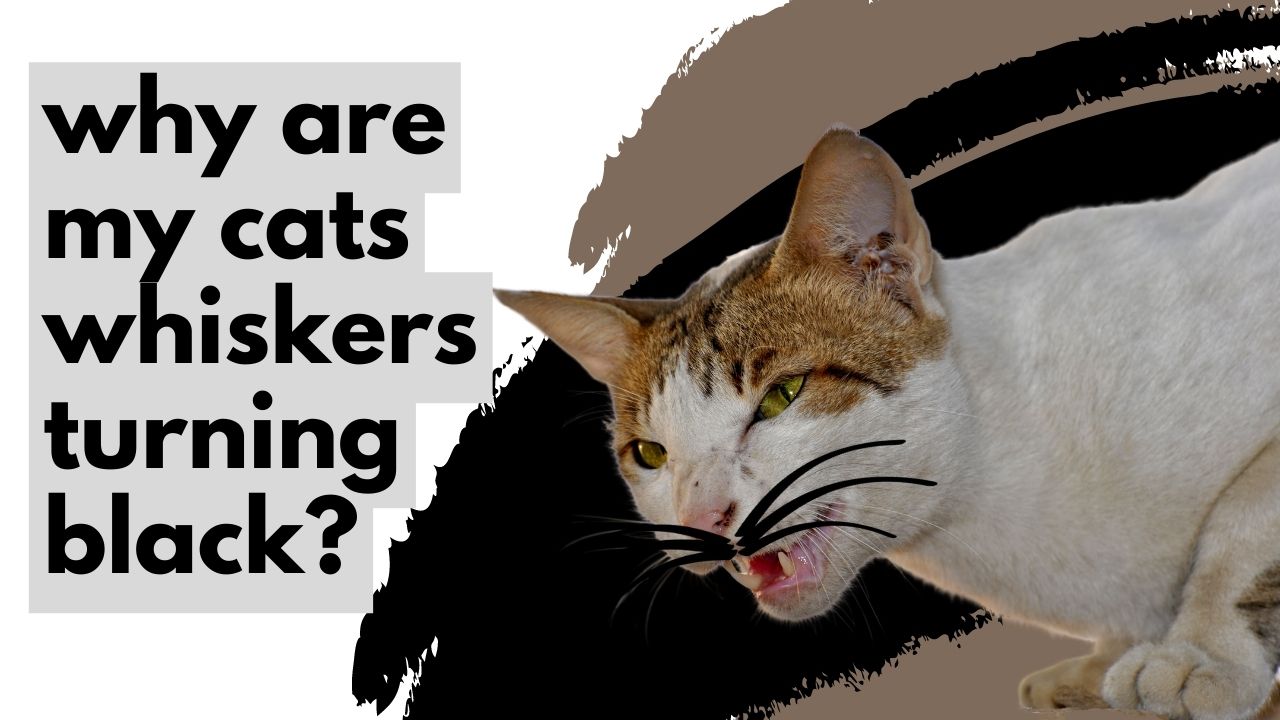
Why are my cat’s whiskers turning black? Whiskers can be one of the most distinctive features of a cat, but if your cat’s whiskers turn black, it could cause concern about his health and wellness. In this article, you’ll learn more about why cat whiskers turn black and what that might mean about your feline friend’s health. You’ll also find out what you can do to keep your cat healthy and happy!
1) Age
One common cause of darkening whiskers is simply old age. As your cat ages, its whiskers may grow black and greasy. This doesn’t usually affect their functionality, but you may notice an odor. If your cats are both getting older, it could signify they’re stressed or not feeling well. A trip to your vet might be in order!
2) Stress
When a cat is stressed, it’ll often start losing its hair. Their whiskers are no exception to that rule. If your kitty is under tremendous stress and their whiskers are starting to look faded or black, it may be time to see what is stressing them out in your home environment.
Maybe it’s an owner that isn’t spending enough time with them, a new pet in their territory, or even another feline-friendly housemate that has gone rogue. If you aren’t sure why your cat’s whiskers are turning black, it could be stress, and you should talk with a veterinarian about what might be triggering it.
3) Nutrition Related
A poor diet or one that lacks vital nutrients can cause your cat’s whiskers to turn black, as can a vitamin deficiency. As you might expect, it’s unlikely that you’ll be able to stop your cat from eating its regular food—even if it causes her whiskers to darken. However, it’s possible that she has a dietary sensitivity and could benefit from switching to an all-natural diet. Speak with your veterinarian before making any changes.
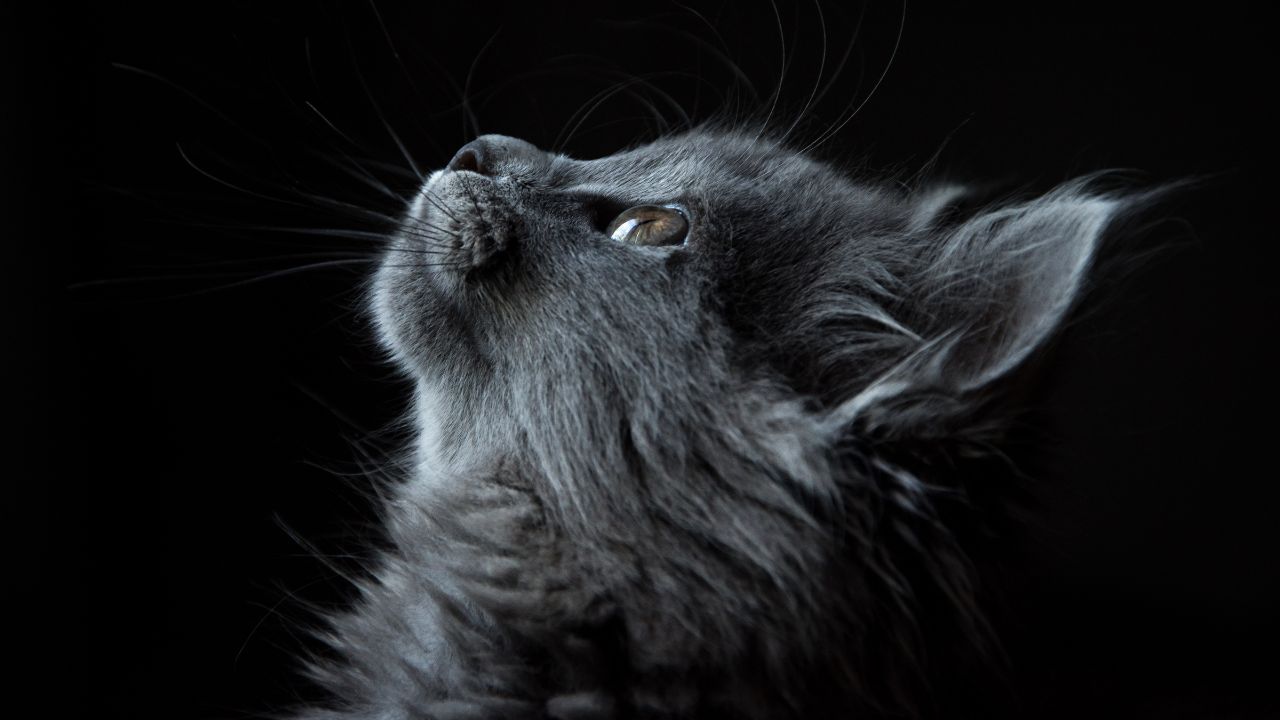
4) Injury
If a cat’s whiskers are turning black, it could be due to an injury. When cats hurt themselves, their body temperature will rise, and their blood vessels will dilate. This causes redness in that part of their body, including on their whiskers. If your cat is injured and its whiskers are turning black, you may want to take them to your veterinarian for treatment if they aren’t getting better with time.
5) Mange mites
If your cat’s whiskers are turning black and curling under, there is a good chance she has mange mites. This is especially common in feral cats but can also affect domestic ones. Mange mites make whiskers vulnerable to infection, which can lead to discoloration. The good news is that treating mange mites is relatively simple.
For about three weeks, you must eliminate them by using a topical treatment like Revolution or Advantage III. You’ll know it’s working when your cat’s hair grows back, and her whiskers stop turning black and curling up—until she gets reinfected by other cats!
6) Over-grooming
Your cat is likely an over-groomer, meaning they spend an abnormal amount of time grooming themselves, usually when stressed out. The most apparent sign of over-grooming is your cat’s whiskers turning black. A variety of things can trigger over-groomers.
Although there isn’t one specific thing that starts all over-groomers, overweight cats in pain due to arthritis will often groom excessively due to discomfort. If you notice your cat constantly licking his bottom, it could also be a sign that he has a bladder infection which causes him pain when urinating. This can lead to excessive grooming around his tail and anus area to relieve himself of inflammation.
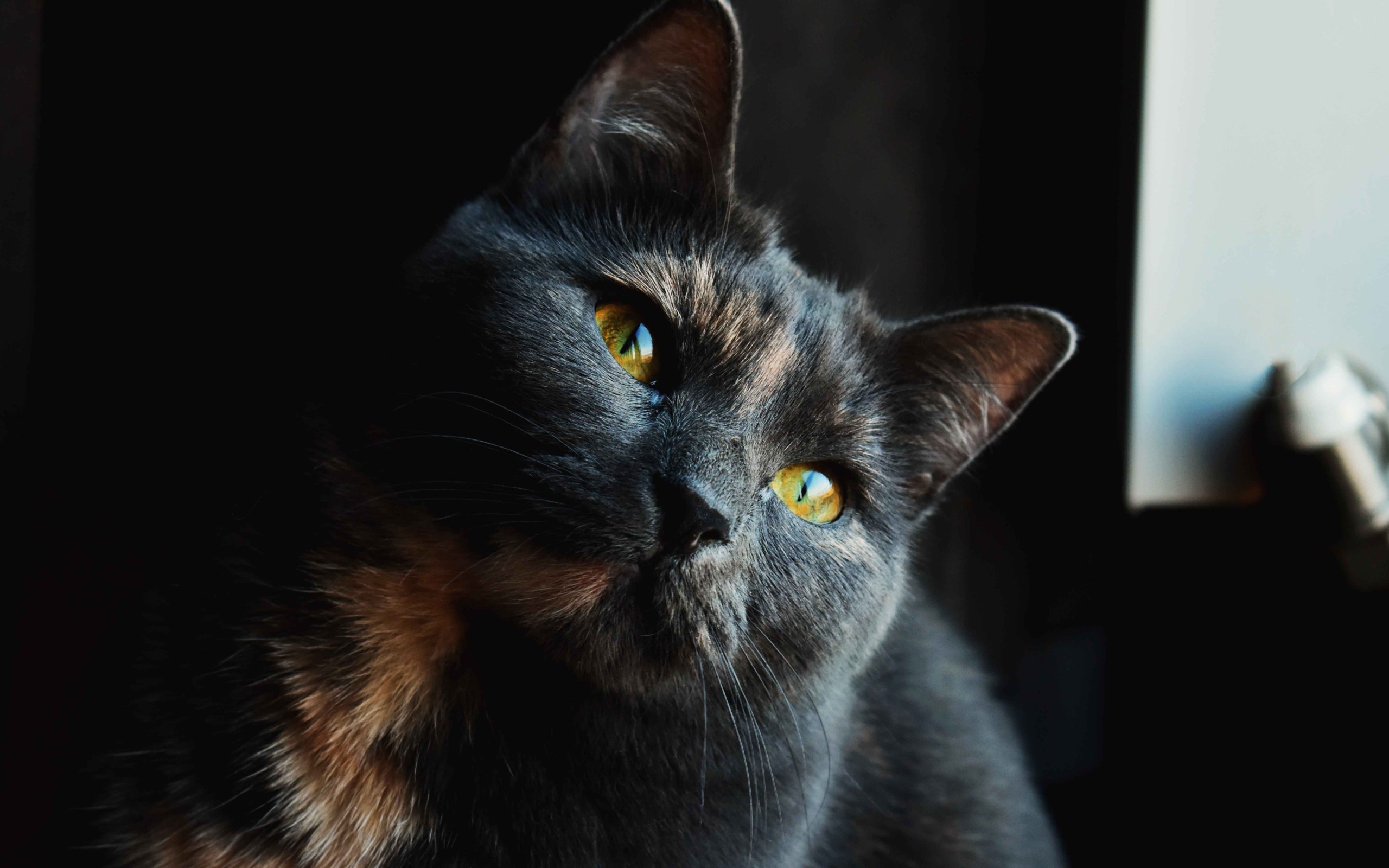
7) Trauma
If you’ve just brought home a kitten, it’s normal for their whiskers to look black—they don’t typically grow in until three months of age. But if your cat is older and their whiskers are turning black, it might signify that they’ve suffered trauma to their face or head. Typically, whisker color will change from white to gray as your cat ages; when they start turning darker, it can mean that something is off with your pet’s health.
8) Cat scratch fever
In most cases, cats’ immune systems are strong enough to fight off infections on their own. However, suppose your cat’s immune system is compromised (by age or illness). In that case, he might not be able to protect himself against common diseases such as upper respiratory infections (such as rhinitis and tracheobronchitis), lower respiratory infections (pneumonia), hepatitis, endocarditis, FIV/FELV (feline immunodeficiency virus/feline leukemia virus) and more. If you suspect a sick cat may have a severe infection that could turn deadly, seek veterinary attention ASAP. If you catch it in time, antibiotics can kill some of these dangerous bacteria before they get out of control.
9) Ear mites
Ear mites are cat parasites that can often cause brownish discoloration of your cat’s fur and dark discharge from its ears. It’s widespread to find them in cats under three months old, but they can also be found in more senior kitties—even up to eight months of age.
The good news is that ear mites are easily treatable if you catch them early. If you notice your cats’ whiskers turning black and find dark brown discharge near their ears or inside them, bring them to see your vet immediately so they can be treated!
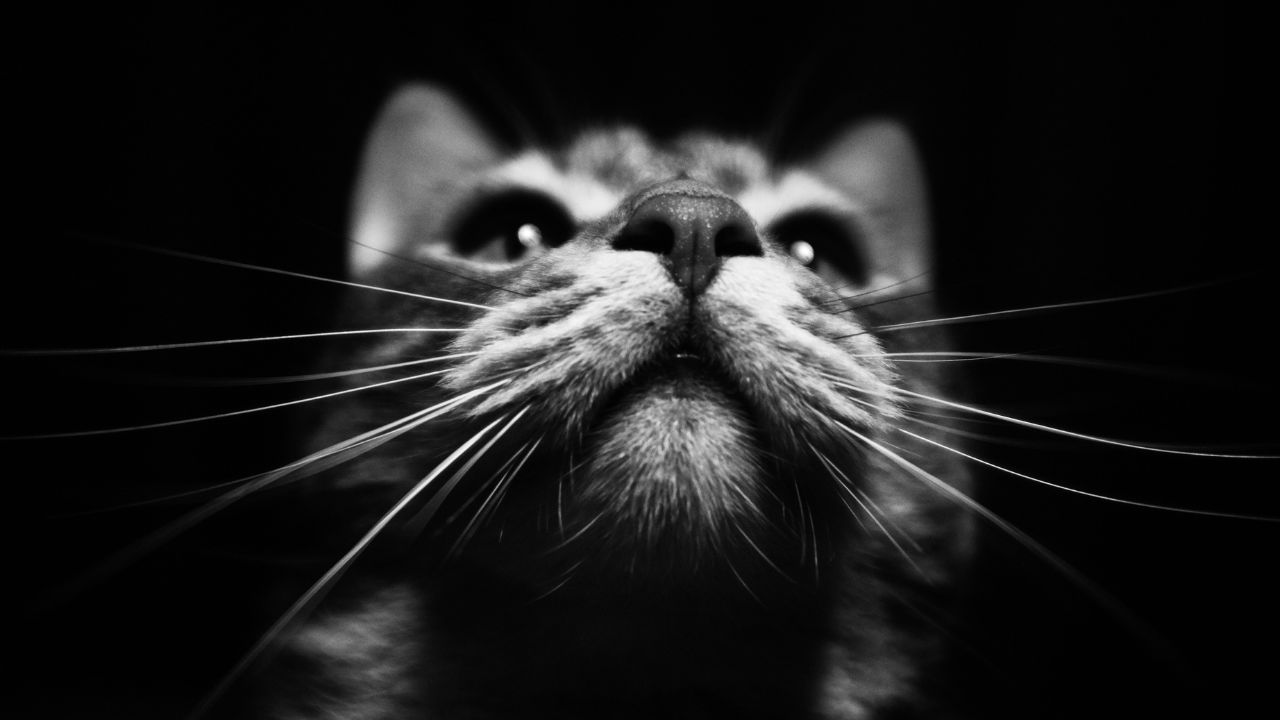
10) Ringworm disease
Ringworm, or dermatophytosis, is a common fungus infection of humans and other animals. The most common form of ringworm disease in cats is caused by Microsporum canis. However, others, such as M. gypseum, Trichophyton mentagrophytes, and Epidermophyton floccosum, can cause ringworm in cats. Affected cats develop small bald patches on their skin which become circular. Lesions may be visible elsewhere on your cat’s body, such as inside its ears or mouth. These infections can occur at any age but are commonly seen in young kittens.
Ringworm is also a common cause of darkening of whiskers—it’s caused by a fungus that tends to affect hairless cats or those with light-colored fur. If you see brown or black patches on your kitty’s skin (particularly their ears, face, nose, tail, mouth, and paw pads), ringworm could be what you’re dealing with.
11) Parasite infestation
An infestation of microscopic worms known as nematodes can cause cats’ black whiskers and fur loss. The only way to tell if your cat has these worms is to take it to a vet, where they’ll run a fecal test that detects parasite eggs and larvae. Nematode infestations are treated with anti-parasitic drugs given orally or by injection. If you think your pet might have a nematode problem, consult your veterinarian; parasites can spread quickly from animal to animal, especially if they share food dishes, bedding, and litter boxes. All parasites can be avoided by keeping clean litter boxes and feeding bowls.
12) Aging
Many changes happen to your cat’s health as they age, but not all of them are noticeable. One noticeable difference is age-related graying and darkening of a cat’s whiskers. For example, older cats tend to have shorter, thicker whiskers and even blacker ends on their whiskers than younger cats do. However, it can be difficult to tell how old your cat is based solely on their whiskers, so don’t be toworryours are still a light color at 15 or 16 years of age. What does matter is whether or not your kitty starts having more trouble seeing with their darker ones.
13) Respiratory infections
Infections are common in cats, especially young kittens. While you may see signs of a respiratory infection early on, like sneezing or watery eyes and nose, your cat may not show symptoms for quite some time. As respiratory infections progress, sometimes up to one year after the initial infection, black whisker tips become noticeable on many cats. Sometimes it will be just one side of their face affected; other times, it will be both.

14) Nutrition Related
A poor diet or one that lacks vital nutrients can cause your cat’s whiskers to turn black, as can a vitamin deficiency. As you might expect, it’s unlikely that you’ll be able to stop your cat from eating its regular food—even if it causes her whiskers to darken. However, it’s possible that she has a dietary sensitivity and could benefit from switching to an all-natural diet. Speak with your veterinarian before making any changes.
15) Injury
If a cat’s whiskers are turning black, it could be due to an injury. When cats hurt themselves, their body temperature will rise, and their blood vessels will dilate. This causes redness in that part of their body, including on their whiskers. If your cat is injured and its whiskers are turning black, you may want to take them to your veterinarian for treatment if they aren’t getting better with time.
16) Hormone-related conditions
Adrenal or pituitary tumors, Diabetes, Hypothyroidism or Hyperthyroidism, Hyperadrenocorticism (Cushing’s disease), Hyperglycemia, and Coccidia infections. All these conditions cause changes to your cat’s body, which can affect his whiskers. Adrenal and pituitary tumors interfere with hormones that promote hair growth, while diabetes tends to decrease blood flow to all extremities, including your cat’s whiskers. Thyroid imbalances do much of the same, while chronic infections tend to damage and deprive whisker follicles of oxygen and nutrients.
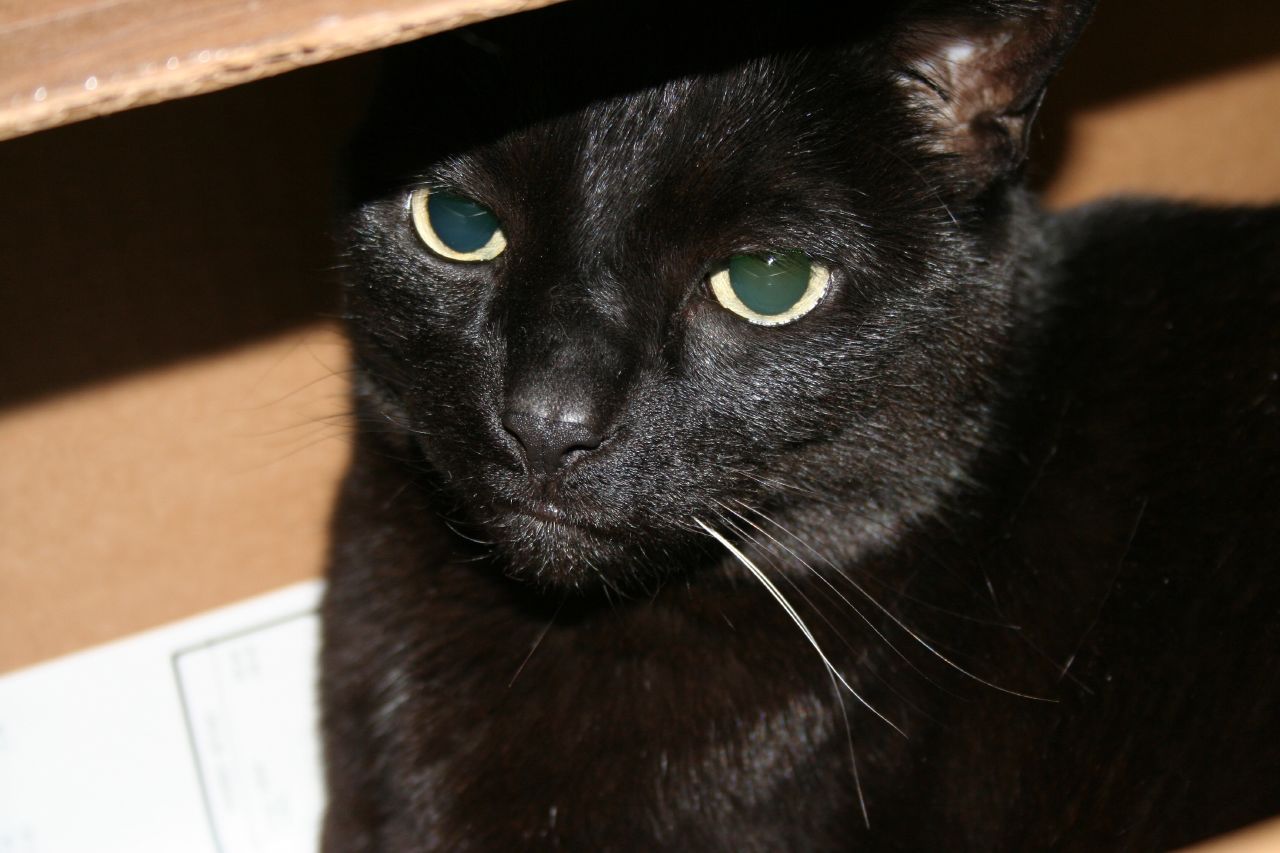
17) Medications and health conditions
Sometimes, your cat’s whiskers might start to turn black. This is often a sign of an underlying health condition. It could be caused by anything from general anesthesia to diabetes, but most commonly, it is a sign that your kitty has become stressed or ill. You should take them to see a veterinarian immediately if you notice any change in your cat’s facial appearance—especially if it begins with whiskers turning black. Medications and illness can have pretty severe side effects for cats, so if you suspect something serious isn’t right, don’t wait! Get professional help for your furry friend as soon as possible.
18) Feline distemper
If a cat’s whiskers turn black, it could indicate that they have feline distemper (also known as panleukopenia). This life-threatening illness tends to strike cats in their first year of life. It results from a virus called Feline Panleukopenia Virus or FPV. This virus attacks and infects an animal’s lymph nodes and gastrointestinal tract, so you’ll see symptoms like vomiting and diarrhea. Usually, these symptoms present between one to four days after infection, but because it spreads rapidly once your cat becomes infected, there is no way to know if your cat has contracted FPV until he shows symptoms. Some experts recommend vaccinating all kittens with FPV at eight weeks of age.
19) Canine distemper virus (CDV)
The canine distemper virus is highly contagious and can be transmitted through bodily fluids, such as saliva. This virus causes damage to a cat’s immune system and impacts vital organs, causing them to fail. Affected cats often lose their whiskers prematurely due to untreated CDV, according to VCA Animal Hospitals. The virus is spread through contact with an infected animal’s feces or urine, a direct connection between animals, consuming contaminated food or water, or inhaling contaminated air. Though dogs are especially susceptible to CDV, cats can contract it when they come into contact with a dog infected with CDV in an area with poor air circulation.

